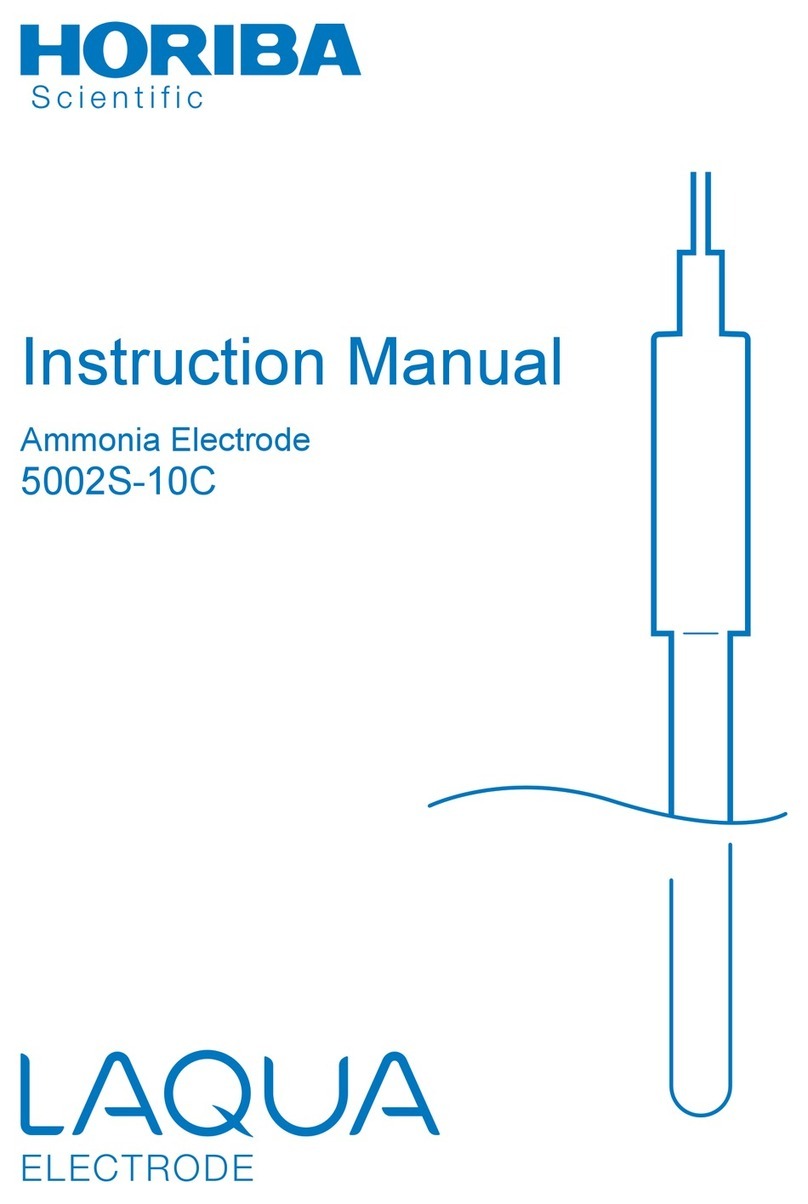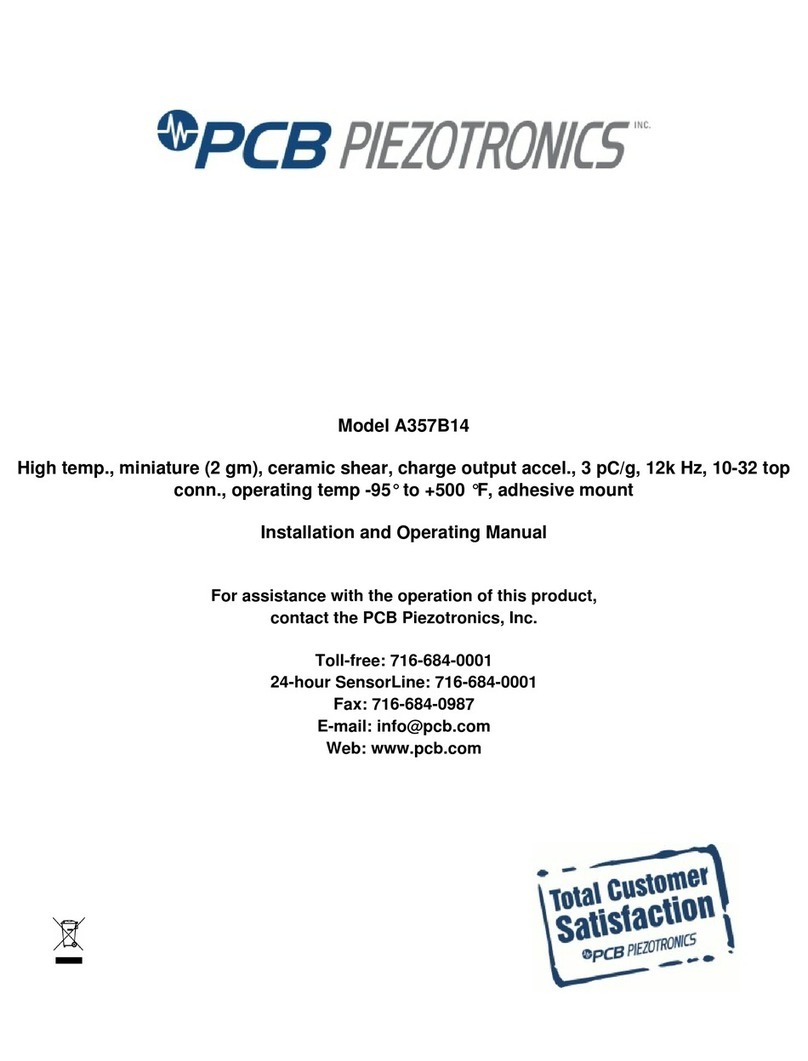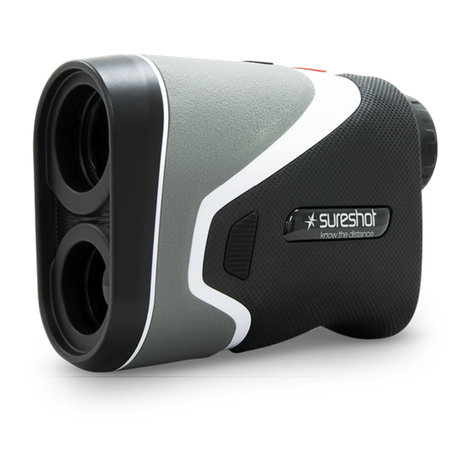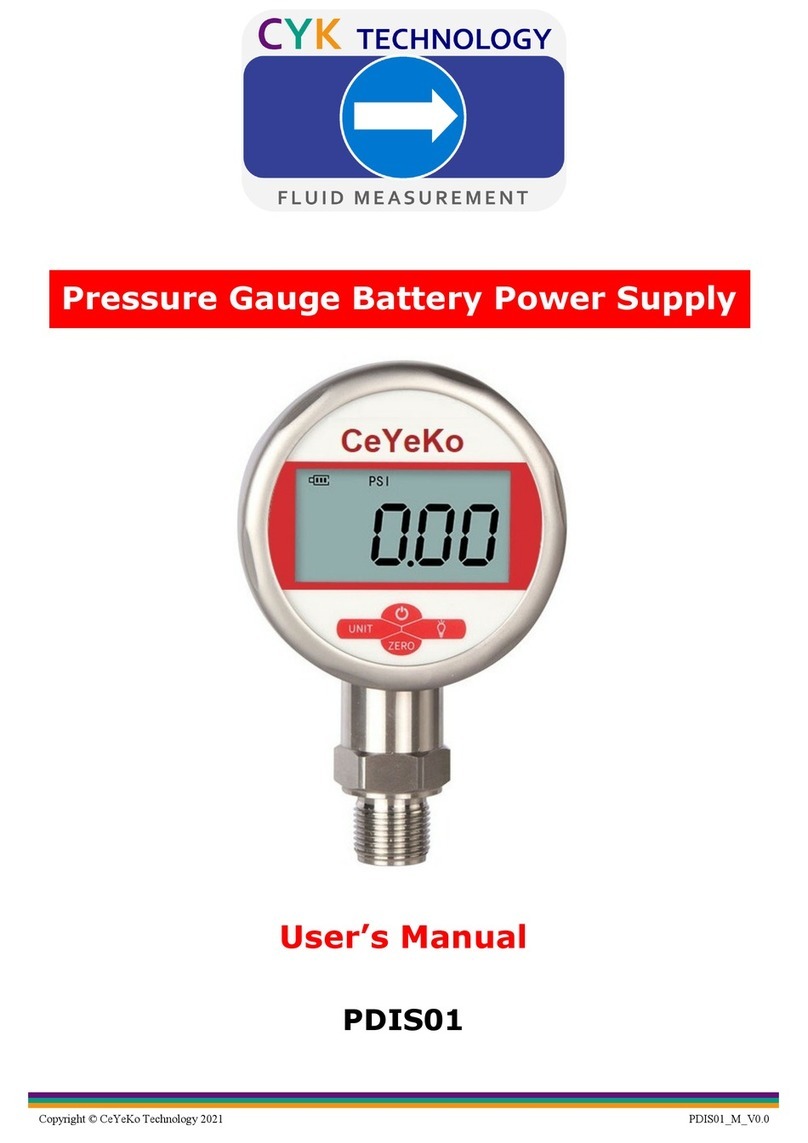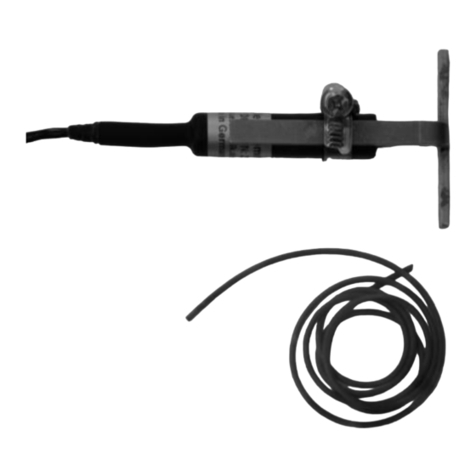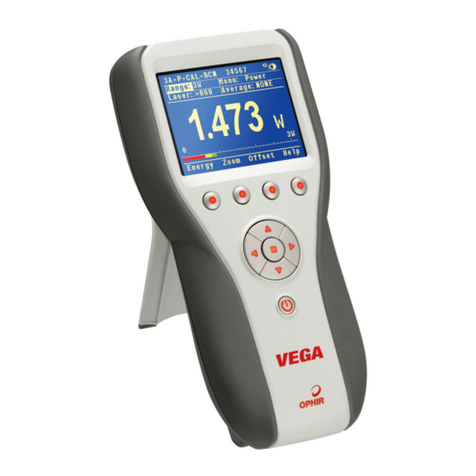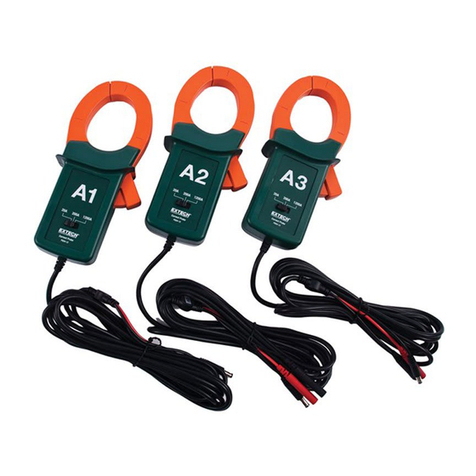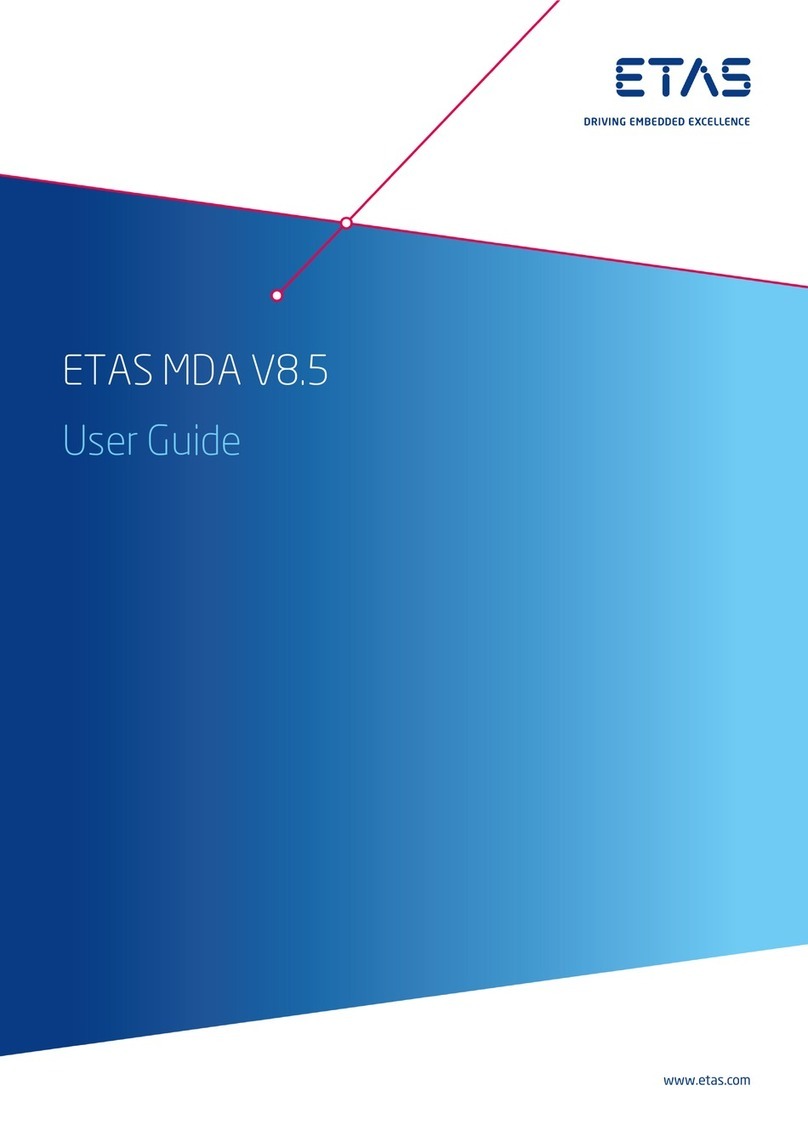Solmetric PVA-1500T User manual

i
Solmetric PV Analyzer™I-V Curve Tracer
User’s Guide
PVA-1500S/V2/V3/V4/T with SolSensor™300/300V2
PVA-1000S with SolSensor™200
PVA-600+with SolSensor™

ii
© Copyright Solmetric Corporation, 2010 –2021
All Rights Reserved. Reproduction, adaptation, or
translation without prior written permission is prohibited,
except as allowed under copyright laws.
Part No. 600-90001
Version 4.0 or higher
December 2021
Printed in USA
Solmetric Corporation
www.solmetric.com
Tel: (877) 263-5026
Fax: (707) 823-4620
End User Software License and Hardware
Agreement
CAREFULLY READ THE FOLLOWING AGREEMENT.
BY OPENING THE PACKAGE OR CLICKING ON "I
AGREE", YOU ARE CONSENTING TO BE BOUND BY
AND ARE BECOMING A PARTY TO THIS
AGREEMENT. IF YOU DO NOT AGREE TO ALL OF
THE TERMS OF THIS AGREEMENT, CLICK "I DO
NOT AGREE", DELETE ANY DOWNLOADED
INSTALLATION FILES, AND, IF APPLICABLE,
RETURN THIS PRODUCT TO THE PLACE OF
PURCHASE FOR A FULL REFUND.
Software License Grant
The package or downloaded installation file contains:
1. PV analyzer TM PC software (“PC Software”),
2. PV analyzer I-V Measurement Unit software
("Embedded Software"), and
3. Related explanatory written materials
("Documentation").
"PC Software" and “Embedded Software” includes any
upgrades, modified versions, updates, additions, and copies
of the software. "You" means the person or company who
is being licensed to use the Software or Documentation.
"We", "us", and “Solmetric” mean Solmetric® Corporation.
We hereby grant you a nonexclusive license to use one
copy of the PC Software on any single computer, provided
the PC Software is in use on only one computer at any
time. The PC Software is "in use" on a computer when it is
loaded into temporary memory (RAM) or installed into the
permanent memory of a computer—for example, a hard
disk, CD-ROM or other storage device. If the PC Software
is permanently installed on the hard disk or other storage
device of a computer (other than a network server) and one
person uses that computer more than 80% of the time, then
that person may also use the PC Software on a portable or
home computer.
We hereby grant you a nonexclusive license to use one
copy of the Embedded Software when it is running within
the relevant Solmetric hardware.
Software Title
Solmetric remains the owner of all right, title and interest in
the PC Software, Embedded Software, and Documentation.
Archival or Backup Copies of PC Software
You may either:
•make one copy of the PC Software solely for
backup or archival purposes, or
•transfer the PC Software to a single hard disk,
provided you keep the original solely for backup
or archival purposes.
Things You May Not Do With the Software or
Documentation
The PC Software, Embedded Software, and Documentation
are protected by United States copyright laws and
international treaties. You must treat the PC Software,
Embedded Software, and Documentation like any other
copyrighted material--for example a book. You may not:
•copy the Documentation,
•copy the Embedded Software
•copy the PC Software except to make archival or
backup copies as provided above,
•modify or adapt the PC Software or Embedded
Software or merge it into another program,
•reverse engineer, disassemble, decompile or
make any attempt to discover the source code of
the PC Software or Embedded Software,
•place the PC Software or Embedded Software
onto a server so that it is accessible via a public
network such as the Internet, or
•sublicense, rent, lease, or lend any portion of the
PC Software, Embedded Software, or
Documentation.

iii
Transfers of PC Software or Embedded Software
You may transfer all your rights to use the PC Software and
Documentation to another person or legal entity provided
you transfer this Agreement, the PC Software, and
Documentation, including all copies, updates and prior
versions to such person or entity and that you retain no
copies, including copies stored on computer.
You may transfer all your rights to use the Embedded
Software and Documentation to another person or legal
entity provided you transfer this Agreement, the hardware
associated with the Embedded Software, and the Embedded
Software and Documentation, including all copies, updates
and prior versions to such person or entity and that you
retain no copies, including copies stored on computer.
Limited Hardware and Software Warranty
This Solmetric PC Software and Embedded Software and
the Solmetric PV analyzer hardware (“Hardware”) are
warranted against defects in materials and workmanship for
a period of one year. During the warranty period, Solmetric
will, at its option, either repair or replace products which
prove to be defective. The warranty period begins on the
date of shipment.
For warranty service or repair, this product must be
returned to Solmetric. For products returned to Solmetric
for warranty service, the Buyer shall pay for shipping
charges to send the product to Solmetric, and Solmetric
shall pay for shipping charges to return the product to the
Buyer. However, the Buyer shall pay all shipping charges,
duties, and taxes for products returned to Solmetric from
another country.
The foregoing warranty shall not apply to defects resulting
from improper or inadequate maintenance by the Buyer,
unauthorized modification or misuse, or operation outside
of the environmental specifications for the product.
Unauthorized modification includes disassembly of the
Hardware or removal of any part of the Hardware
(including opening the PV analyzer I-V Measurement
Unit). The design, construction, and measurement of any
system or building by the Buyer is the sole responsibility of
the Buyer. Solmetric does not warrant the Buyer’s system,
products, or malfunction of the Buyer’s system or products.
In addition, Solmetric does not warrant any damage that
occurs as a result of the Buyer’s system, product, or the
Buyer’s use of Solmetric products.
To the extent permitted by applicable law, THE
FOREGOING LIMITED WARRANTY IS IN LIEU OF
ALL OTHER WARRANTIES OR CONDITIONS,
EXPRESS OR IMPLIED, AND WE DISCLAIM ANY
AND ALL IMPLIED WARRANTIES OR CONDITIONS,
INCLUDING ANY IMPLIED WARRANTY OF TITLE,
NONINFRINGEMENT, MERCHANTABILITY OR
FITNESS FOR A PARTICULAR PURPOSE, regardless of
whether we know or had reason to know of your particular
needs. No employee, agent, dealer, or distributor of ours is
authorized to modify this limited warranty, nor to make any
additional warranties.
SOME STATES DO NOT ALLOW THE EXCLUSION
OF IMPLIED WARRANTIES, SO THE ABOVE
EXCLUSION MAY NOT APPLY TO YOU. THIS
WARRANTY GIVES YOU SPECIFIC LEGAL RIGHTS,
AND YOU MAY ALSO HAVE OTHER RIGHTS
WHICH VARY FROM STATE TO STATE.
Limited Remedy
Our entire liability and your exclusive remedy shall be the
replacement or repair of any Solmetric Hardware or
Solmetric PC Software or Embedded Software not meeting
our Limited Hardware and Software Warranty which is
returned to us or to an authorized Dealer or Distributor with
a copy of your receipt.
IN NO EVENT WILL WE BE LIABLE TO YOU FOR
ANY DAMAGES, INCLUDING ANY LOST PROFITS,
LOST SAVINGS, INJURY, DEATH, OR OTHER
INCIDENTAL OR CONSEQUENTIAL DAMAGES
ARISING FROM THE USE OF OR THE INABILITY TO
USE THE PC SOFTWARE, EMBEDDED SOFTWARE,
HARDWARE, OR DOCUMENTATION (EVEN IF
SOLMETRIC OR AN AUTHORIZED DEALER OR
DISTRIBUTOR HAS BEEN ADVISED OF THE
POSSIBILITY OF THESE DAMAGES), OR FOR ANY
CLAIM BY ANY OTHER PARTY.
SOME STATES DO NOT ALLOW THE LIMITATION
OR EXCLUSION OF LIABILITY FOR INCIDENTAL
OR CONSEQUENTIAL DAMAGES, SO THE ABOVE
LIMITATION MAY NOT APPLY TO YOU.
Term and Termination
This agreement takes effect upon your use of the PC
Software, Embedded Software, or Hardware and remains
effective until terminated. You may terminate it at any time
by destroying all copies of the PC Software, Embedded
Software, and Documentation in your possession and
returning the Hardware to Solmetric or to an authorized
distributor. It will also automatically terminate if you fail to
comply with any term or condition of this license
agreement. You agree on termination of this license to
either return to us or destroy all copies of the PC Software,
Embedded Software, and Documentation in your
possession and to return the Hardware to us or to an
authorized distributor.

iv
Confidentiality
The PC Software and Embedded Software contain trade
secrets and proprietary know-how that belong to us and it is
being made available to you in strict confidence. ANY USE
OR DISCLOSURE OF THE PC SOFTWARE,
EMBEDDED SOFTWARE, OR OF THEIR
ALGORITHMS, PROTOCOLS OR INTERFACES,
OTHER THAN IN STRICT ACCORDANCE WITH THIS
LICENSE AGREEMENT, MAY BE ACTIONABLE AS
A VIOLATION OF OUR TRADE SECRET RIGHTS.
Trademarks
SOLMETRIC, PV ANALYZER, PV DESIGNER,
SOLMETRIC IPV, and SOLMETRIC ISV are trademarks
owned by Solmetric Corporation. SOLMETRIC and
SUNEYE are registered trademarks in the U.S. Patent and
Trademark Office.
General Provisions
1. This written agreement is the exclusive agreement
between you and us concerning the PC Software,
Embedded Software, Hardware, and Documentation
and supersedes any and all prior oral or written
agreements, negotiations, or other dealings between us
concerning the PC Software, Embedded Software,
Hardware, or Documentation.
2. This license agreement may be modified only in
writing and written documentation must be signed by
Buyer and Solmetric.
3. In the event of litigation between Buyer and Solmetric
concerning the PC Software, Embedded Software,
Hardware, or Documentation, the prevailing party in
the litigation will be entitled to recover attorney fees
and expenses from the other party.
4. This license agreement is governed by the laws of the
State of California.
5. Buyer agrees that the PC Software, Embedded
Software, or Hardware will not be shipped, transferred
or exported into any country or used in any manner
prohibited by the United States Export Administration
Act or any other export laws, restrictions, or
regulations.

v
Contents
1GETTING STARTED ........................................................................................................................................ 1-1
OVERVIEW............................................................................................................................................................. 1-1
COMPUTER MINIMUM SYSTEM REQUIREMENTS .................................................................................................... 1-2
EQUIPMENT............................................................................................................................................................ 1-3
Curve Tracer Equipment (PVA-1500xx, PVA-1000S, PVA-600+).................................................................. 1-3
SolSensor Equipment........................................................................................................................................ 1-3
SPECIFICATIONS..................................................................................................................................................... 1-4
PVA-1500xx I-V Measurement Unit Specifications ........................................................................................ 1-4
PVA-1500xx Test Lead and Clip Specifications .............................................................................................. 1-6
PVA-1000S I-V Measurement Unit Specifications .......................................................................................... 1-6
PVA-600+Specifications.................................................................................................................................. 1-8
SolSensor 200/300/300V2 Specifications......................................................................................................... 1-9
SAFETY AND REGULATORY.................................................................................................................................. 1-10
PVA-1500xx Safety and Regulatory............................................................................................................... 1-10
Warnings, Cautions, and Notes .................................................................................................................. 1-10
Declaration of Conformity.......................................................................................................................... 1-11
Cleaning...................................................................................................................................................... 1-11
Instrument Markings .................................................................................................................................. 1-11
PVA-1000SSafety and Regulatory................................................................................................................. 1-11
Warnings, Cautions, and Notes .................................................................................................................. 1-11
Declaration of Conformity.......................................................................................................................... 1-12
Cleaning...................................................................................................................................................... 1-12
Instrument Markings .................................................................................................................................. 1-12
PVA-600+Safety and Regulatory.................................................................................................................... 1-12
Warnings, Cautions, and Notes .................................................................................................................. 1-13
Declaration of Conformity.......................................................................................................................... 1-13
Cleaning...................................................................................................................................................... 1-13
Instrument Markings .................................................................................................................................. 1-13
SolSensor 300 and SolSensor 300V2 Safety and Regulatory......................................................................... 1-15
Warnings, Cautions, and Notes .................................................................................................................. 1-15
Declaration of Conformity ......................................................................................................................... 1-15
Cleaning...................................................................................................................................................... 1-15
Instrument Markings .................................................................................................................................. 1-15
SolSensor (original) Safety and Regulatory.................................................................................................... 1-16
Warnings, Cautions, and Notes .................................................................................................................. 1-16
Declaration of Conformity ......................................................................................................................... 1-16
Cleaning...................................................................................................................................................... 1-16
Instrument Markings .................................................................................................................................. 1-17
PRECAUTIONS ...................................................................................................................................................... 1-18
PVA-1500xx Precautions................................................................................................................................ 1-18
Using Test Leads and Clips........................................................................................................................ 1-18
Using PV Connector Saver Jumpers........................................................................................................... 1-19
PV/Electrical Safety Precautions................................................................................................................ 1-19
Battery Precautions..................................................................................................................................... 1-21
Measuring High-Efficiency PV Modules................................................................................................... 1-21
PVA-1000S Precautions ................................................................................................................................. 1-21

vi
Using PV Connector Saver Jumpers........................................................................................................... 1-21
PV/Electrical Safety Precautions................................................................................................................ 1-22
Battery Precautions..................................................................................................................................... 1-23
Measuring High-Efficiency PV Modules................................................................................................... 1-23
PVA-600+Precautions.................................................................................................................................... 1-23
Using PV Connector Saver Jumpers........................................................................................................... 1-23
PV/Electrical Safety Precautions................................................................................................................ 1-24
Battery Precautions..................................................................................................................................... 1-25
Measuring High-Efficiency PV Modules................................................................................................... 1-25
SolSensor 300xx, SolSensor 200, and Original SolSensor Precautions.......................................................... 1-25
Covering the Irradiance Sensor .................................................................................................................. 1-25
Cleaning the Irradiance Sensor................................................................................................................... 1-26
Battery Precautions..................................................................................................................................... 1-26
INSTALLATION PROCEDURE................................................................................................................................. 1-27
I-V Measurement Unit Installation Procedure ................................................................................................ 1-27
Hardware Installation ................................................................................................................................. 1-27
Software Installation................................................................................................................................... 1-27
Updating the PV Equipment Databases...................................................................................................... 1-31
SolSensor Installation Procedure .................................................................................................................... 1-32
CHARGING THE BATTERY .................................................................................................................................... 1-32
Charging the Battery on the PVA-1500xx I-V Measurement units................................................................ 1-32
Charging the SolSensor 300xx Battery........................................................................................................... 1-33
Charging the Battery on the PVA-1000S and PVA-600+I-V Measurement Unit.......................................... 1-33
Charging the SolSensor Battery of the Original SolSensor ............................................................................ 1-34
YOUR WIRELESS NETWORK................................................................................................................................. 1-35
Your PVA-1500xx/SolSensor 300xx Wireless Network................................................................................ 1-35
Your PVA-1000S/600+/SolSensor Wireless Network .................................................................................... 1-36
2SETTING UP AND USING THE I-V MEASUREMENT UNIT AND SOLSENSOR ............................... 2-38
SYSTEM CONTROLS AND SETTINGS...................................................................................................................... 2-38
Operational States of the PVA-1500xx I-V Measurement Units.................................................................... 2-38
Operational States of the PVA-1000S & 600+I-V Measurement Unit............................................................ 2-40
SETTING UP THE I-V MEASUREMENT UNIT.......................................................................................................... 2-41
SETTING UP SOLSENSOR...................................................................................................................................... 2-42
MOUNTING SOLSENSOR TO A PV MODULE FRAME............................................................................................... 2-43
OPTIMIZING WIRELESS TRANSMISSION RANGE ..................................................................................................... 2-47
MOUNTING SOLSENSOR ON A TRIPOD.................................................................................................................. 2-47
CONNECTING TO THE SOLAR PV EQUIPMENT ...................................................................................................... 2-49
POWERING-UP THE I-V MEASUREMENT UNIT...................................................................................................... 2-51
I-V MEASUREMENTS............................................................................................................................................ 2-52
SWEEP DISABLED................................................................................................................................................. 2-52
OVER-TEMPERATURE PROTECTION ..................................................................................................................... 2-52
Sweep-to-Sweep Delay and Thermal Capacity of the PVA-1500xx .............................................................. 2-53
Operating Under High-Temperature Conditions............................................................................................. 2-54
OVER-VOLTAGE WARNINGS................................................................................................................................ 2-55
PVA-1500xx Over-voltage Condition ............................................................................................................ 2-55
PVA-1000S Over-voltage Condition.............................................................................................................. 2-55
PVA-600+Over-voltage Protection ................................................................................................................ 2-55
OVER-CURRENT WARNINGS................................................................................................................................ 2-55

vii
REVERSE POLARITY PROTECTION........................................................................................................................ 2-56
3SOFTWARE OVERVIEW ................................................................................................................................ 3-1
USING PROJECTS.................................................................................................................................................... 3-1
USING THE SYSTEM TREE ...................................................................................................................................... 3-2
MAIN SCREEN OVERVIEW...................................................................................................................................... 3-2
MENU BAR............................................................................................................................................................. 3-3
File Menu.......................................................................................................................................................... 3-3
Browse Project ............................................................................................................................................. 3-3
Recent Projects............................................................................................................................................. 3-3
Export Trace for Active Measurement ......................................................................................................... 3-3
Export Traces for Entire System .................................................................................................................. 3-3
Export Meg Test Data .................................................................................................................................. 3-4
New Project.................................................................................................................................................. 3-4
Selecting your PV Module....................................................................................................................... 3-6
Creating the System Tree......................................................................................................................... 3-7
Using the Symmetrical Tree Builder........................................................................................................ 3-8
CLONING,MODIFYING,AND REUSING A PREVIOUS PROJECT............................................................................... 3-11
Properties Menu.............................................................................................................................................. 3-11
View Menu ..................................................................................................................................................... 3-12
Trace view options... .................................................................................................................................. 3-12
Show Meg Test Tab.................................................................................................................................... 3-12
Utility Menu.................................................................................................................................................... 3-12
Help Menu ...................................................................................................................................................... 3-15
USING THE TAB SCREENS..................................................................................................................................... 3-16
Traces Tab....................................................................................................................................................... 3-16
Table Tab........................................................................................................................................................ 3-21
History Tab..................................................................................................................................................... 3-22
Meg Test Tab.................................................................................................................................................. 3-23
DESCRIPTION OF THE EXPORTED I-V DATA FILE ................................................................................................. 3-24
BASIS OF PV PERFORMANCE PREDICTIONS.......................................................................................................... 3-29
SolSensor Irradiance Calibration .................................................................................................................... 3-29
Irradiance Measurement.................................................................................................................................. 3-30
Prediction of PV Performance ........................................................................................................................ 3-30
Translation of Measured Values to STC......................................................................................................... 3-30
Measurement of Isc.......................................................................................................................................... 3-31
PVA PC SOFTWARE UPDATES............................................................................................................................. 3-31
PVA-1500V2/V3/V4/T AND SOLSENSOR 300V2 FIRMWARE UPDATES.............................................................. 3-31
4MAKING MEASUREMENTS........................................................................................................................... 4-1
INTRODUCTION ...................................................................................................................................................... 4-1
BEFORE YOU GO TO THE FIELD TO MAKE MEASUREMENTS ..................................................................................... 4-1
Charge the equipment....................................................................................................................................... 4-1
Check that you are using the latest PVA software............................................................................................ 4-1
Create a Project in the PVA software. .............................................................................................................. 4-1
Make sure you have all your equipment ........................................................................................................... 4-2
Assure adequate irradiance for your measurements.......................................................................................... 4-2
MAKING MEASUREMENTS IN THE FIELD................................................................................................................ 4-2
Measure the open circuit voltage Voc............................................................................................................... 4-2

viii
Place the I-V Unit near the PV circuits to be measured.................................................................................... 4-3
Connect the test leads to the PVA..................................................................................................................... 4-3
Launch the PVA software................................................................................................................................. 4-3
Load your Project.............................................................................................................................................. 4-3
Insert the wireless USB adapter (PVA-1000S and PVA-600+)........................................................................ 4-3
Mount SolSensor............................................................................................................................................... 4-4
Attach SolSensor thermocouple........................................................................................................................ 4-4
Turn on the I-V Measurement Unit, and connect wirelessly to your PC .......................................................... 4-4
Turn on SolSensor ............................................................................................................................................ 4-5
Prepare the PV source circuits for measurement .............................................................................................. 4-5
Are you measuring strings in parallel?.............................................................................................................. 4-5
Are you measuring high-efficiency modules? .................................................................................................. 4-5
Connect the test leads to the PV equipment...................................................................................................... 4-6
Select the first PV circuit to be measured......................................................................................................... 4-6
Make your first measurement ........................................................................................................................... 4-6
Select the next PV circuit and take another measurement ................................................................................ 4-7
View the consistency of your data before moving on....................................................................................... 4-7
From time to time, back up your data............................................................................................................... 4-8
5TROUBLESHOOTING PVA OPERATION ................................................................................................... 5-1
TROUBLESHOOTING USING STATUS MESSAGES..................................................................................................... 5-1
TROUBLESHOOTING BY SYMPTOM......................................................................................................................... 5-4
6MEASURING IRRADIANCE, TEMPERATURE, AND TILT ..................................................................... 6-1
INTRODUCTION ...................................................................................................................................................... 6-1
MEASURING IRRADIANCE WITH SOLSENSOR ......................................................................................................... 6-3
SolSensor irradiance sensor.............................................................................................................................. 6-3
Preliminary Irradiance ...................................................................................................................................... 6-3
SolSensor Precautions....................................................................................................................................... 6-3
Protecting the Irradiance Sensor Element..................................................................................................... 6-3
Cleaning the Irradiance Sensor..................................................................................................................... 6-3
Orienting and mounting the irradiance sensor .................................................................................................. 6-4
Albedo effects................................................................................................................................................... 6-4
Diffuse light...................................................................................................................................................... 6-4
DETERMINING IRRADIANCE FROM THE MEASURED I-V CURVE ............................................................................. 6-5
ENTERING IRRADIANCE MANUALLY...................................................................................................................... 6-6
MEASURING PV MODULE BACKSIDE TEMPERATURE WITH A THERMOCOUPLE ..................................................... 6-6
Selecting a thermocouple wire gauge ............................................................................................................... 6-7
Selecting a thermocouple tip............................................................................................................................. 6-7
Selecting a tape for thermocouple attachment .................................................................................................. 6-7
Attaching the thermocouple to the module backside ........................................................................................ 6-8
Choosing a location to mount the thermocouple on the module or array.......................................................... 6-8
MEASURING PV MODULE TEMPERATURE WITH AN INFRARED THERMOMETER....................................................... 6-9
DETERMINING CELL TEMPERATURE FROM THE MEASURED I-V CURVE .............................................................. 6-10
USING SMARTTEMP TO MEASURE CELL TEMPERATURE...................................................................................... 6-11
7INTERPRETING MEASURED I-V CURVES ................................................................................................ 7-1
INTRODUCTION ...................................................................................................................................................... 7-1
INPUTS TO THE PV MODEL..................................................................................................................................... 7-1

ix
I-V CURVE TERMINOLOGY .................................................................................................................................... 7-2
Performance Factor........................................................................................................................................... 7-2
Fill Factor.......................................................................................................................................................... 7-2
THE SHAPE OF A NORMAL I-V CURVE ................................................................................................................... 7-3
INTERPRETING I-V CURVES ................................................................................................................................... 7-4
1. NOTCHES OR STEPS ............................................................................................................................................ 7-6
Array Is Partially Shaded, or non-uniform soiling or debris is present............................................................. 7-8
PV Cells Are Damaged..................................................................................................................................... 7-8
Cell String Conductor Is Short Circuited.......................................................................................................... 7-8
2. LOW CURRENT................................................................................................................................................... 7-8
Uniform soiling................................................................................................................................................. 7-9
Strip shade ........................................................................................................................................................ 7-9
Dirt dam............................................................................................................................................................ 7-9
Module Degradation ....................................................................................................................................... 7-10
Incorrect PV Module Is Selected for the PV Model ....................................................................................... 7-10
Number of PV Strings in Parallel Is Not Entered Correctly in the Model...................................................... 7-10
Irradiance Changed Between Irradiance and I-V Measurements.................................................................... 7-10
Irradiance Sensor Is Not Oriented in the Plane of Array ................................................................................ 7-10
Albedo Effects (reflection) Contribute Additional Irradiance ........................................................................ 7-10
Irradiance Is Too Low, or the Sun Is Too Close to the Horizon ..................................................................... 7-11
Manual Irradiance Sensor Is Not Accurate..................................................................................................... 7-11
3. LOW VOLTAGE ................................................................................................................................................. 7-11
PV Cell Temperature Is Hotter than the Measured Temperature.................................................................... 7-12
One or More Cells or Modules Are Completely Shaded ................................................................................ 7-12
One or More Bypass Diodes Are Conducting or Shorted............................................................................... 7-12
4. ROUNDER KNEE................................................................................................................................................ 7-13
5. STEEPER SLOPE IN HORIZONTAL LEG................................................................................................................ 7-14
Shunt Paths Exist in PV Cells or Modules...................................................................................................... 7-14
Module Isc Mismatch....................................................................................................................................... 7-15
Tapered shade or dirt dam............................................................................................................................... 7-15
6. LESS STEEP SLOPE IN VERTICAL LEG................................................................................................................. 7-16
PV Wiring Has Excess Resistance or Is Insufficiently Sized ......................................................................... 7-16
Electrical Interconnections in the Array Are Resistive................................................................................... 7-17
Series Resistance of PV Modules Has Increased............................................................................................ 7-17
TROUBLESHOOTING PV ARRAYS ......................................................................................................................... 7-17
8TRANSLATION OF I-V DATA TO STANDARD TEST CONDITIONS..................................................... 8-1
PARAMETER DEFINITIONS ...................................................................................................................................... 8-1
TRANSLATION EQUATIONS..................................................................................................................................... 8-2
Figures
FIGURE 1. TEST LEADS AND CLIPS RATED FOR USE WITH THE PVA-1500S............................................................... 1-18
FIGURE 2. WELCOME SCREEN................................................................................................................................... 1-27
FIGURE 3. PREREQUISITES DIALOG ........................................................................................................................... 1-28
FIGURE 4. INSTALLATION DEFAULT LOCATION DIALOG............................................................................................ 1-28
FIGURE 5. INSERT WIRELESS USB ADAPTER DIALOG................................................................................................ 1-29

x
FIGURE 6. INSERT WIRELESS USB ADAPTER (PVA-600+ AND PVA-1000S ONLY) .................................................. 1-29
FIGURE 7. INSTALLATION COMPLETE DIALOG........................................................................................................... 1-30
FIGURE 8. LAUNCHING THE PVA SOFTWARE............................................................................................................ 1-30
FIGURE 9. SPLASH SCREEN ....................................................................................................................................... 1-30
FIGURE 10. THE SOFTWARE USER INTERFACE SHARED BY THE PVA-1500, PVA-1000S (SHOWN HERE), AND PVA-600+
............................................................................................................................................................... 1-31
FIGURE 11. DIRECTORY STRUCTURE OF PVA SOFTWARE......................................................................................... 1-31
FIGURE 12. BATTERY CHARGER CONNECTOR ON THE I-V MEASUREMENT UNIT...................................................... 1-32
FIGURE 13. CHARGER CONNECTED........................................................................................................................... 1-33
FIGURE 14. BATTERY CHARGER CONNECTOR ON THE I-V MEASUREMENT UNIT ........................................................ 1-34
FIGURE 15. CHARGER CONNECTED........................................................................................................................... 1-34
FIGURE 16. THE WIFI NETWORK OF THE PVA-1500S, SOLSENSOR 300, AND YOUR PC........................................... 1-35
FIGURE 17. NETWORK ICON ..................................................................................................................................... 1-36
FIGURE 18. NETWORK DIAGRAMS ............................................................................................................................ 1-37
FIGURE 19. LED-ILLUMINATED BUTTON SWITCH (SHOWN FOR THE PVA-1500S I-V MEASUREMENT UNIT)........... 2-38
FIGURE 20. SOLSENSOR MOUNTED ON THE FRAME OF A PV MODULE....................................................................... 2-42
FIGURE 21. SOLSENSOR TOOL LANYARD SECURED TO A RACKING MEMBER............................................................. 2-43
FIGURE 22. SOLSENSOR CORRECTLY SEATED ALONG THE UPPER HORIZONTAL LEG OF THE MODULE FRAME........... 2-44
FIGURE 23. TIP OF FRAME CLAMP PROPERLY SEATED ON INSIDE SURFACE OF MODULE FRAME ................................ 2-44
FIGURE 24. THERMOCOUPLE PLUGGED INTO THE TC1 CONNECTOR. ........................................................................ 2-45
FIGURE 25. LOCATING THE THERMOCOUPLE TIP ON A SINGLE FREE-STANDING MODULE.......................................... 2-46
FIGURE 26. SOLSENSOR PUSHBUTTON WITH LED LIT.LED BLINKS UNTIL WIRELESS NETWORK IS ESTABLISHED,AFTER
WHICH IT REMAINS ON............................................................................................................................ 2-46
FIGURE 27. TRIPOD MOUNTING SETUP...................................................................................................................... 2-48
FIGURE 28. EXAMPLE OF I-VMEASUREMENT UNIT TEST LEADS CLIPPED TO THE BUSS BARS OF A PV COMBINER BOX 2-
50
FIGURE 29. POWERING-UP THE I-V MEASUREMENT UNIT........................................................................................ 2-51
FIGURE 30. PVA SOFTWARE MAIN SCREEN ................................................................................................................ 3-2
FIGURE 31. FILE MENU............................................................................................................................................... 3-3
FIGURE 32. THE SITE INFO SCREEN OF THE NEW PROJECT WIZARD ........................................................................... 3-4
FIGURE 33. CONTROLS IN THE SITE INFO SCREEN,SET FOR A FIXED ARRAY WITH 180-DEGREE AZIMUTH.................. 3-4
FIGURE 34. MOST COMMON SETTINGS FOR A HORIZONTAL SINGLE-AXIS TRACKING SYSTEM..................................... 3-5
FIGURE 35. THE TIME ZONE CONTROL IN THE SITE INFO SCREEN................................................................................ 3-5
FIGURE 36. THE PV MODULE SCREEN OF THE NEW PROJECT WIZARD....................................................................... 3-6
FIGURE 37. SELECTION OF THE PV MODULE’S MANUFACTURER AND MODEL NUMBER,AND CORRESPONDING LIST OF
MODULE PERFORMANCE PARAMETERS. .................................................................................................... 3-6
FIGURE 38. ARRAY NAVIGATOR WITH SYMMETRICAL TREE BUILDER.THIS IS THE FINAL STEP IN CREATING A
PROJECT................................................................................................................................................... 3-7
FIGURE 39. FINISHED ARRAY TREE FOR A UTILITY PV FIELD...................................................................................... 3-8
FIGURE 40. THE DEFAULT SYSTEM TREE IN THE SYMMETRICAL TREE BUILDER......................................................... 3-8
FIGURE 41. CONTROLS FOR EDITING THE STRING WIRING PROPERTIES OF YOUR ARRAY TREE.................................. 3-10
FIGURE 42. DIRECTORY STRUCTURE USED BY THE PVA SOFTWARE......................................................................... 3-11
FIGURE 43. PROPERTIES MENU................................................................................................................................. 3-12
FIGURE 44. UTILITY MENU,USED TO CONTROL HOUSEKEEPING FUNCTIONS............................................................ 3-12
FIGURE 45. HELP MENU........................................................................................................................................... 3-15
FIGURE 46. TRACES TAB,SHOWING THE MEASURED I-V CURVE AND THE EXPECTED LOCATIONS OF ISC,MAXIMUM
POWER POINT,AND VOC......................................................................................................................... 3-16
FIGURE 47. TABLE TAB............................................................................................................................................. 3-21
FIGURE 48. HISTORY TAB......................................................................................................................................... 3-23

xi
FIGURE 49. MEG TEST TAB....................................................................................................................................... 3-23
FIGURE 50. HEADER INFORMATION SECTION OF THE EXPORTED CSV FILE................................................................ 3-25
FIGURE 51. THE MEASUREMENT VS.MODEL SECTION OF THE EXPORTED CSV FILE.................................................. 3-26
FIGURE 52. THE SOLSENSOR MEASUREMENTS SECTION OF THE EXPORTED CSV FILE............................................... 3-26
FIGURE 53. MODEL DETAILS SECTION OF THE EXPORTED CSV FILE .......................................................................... 3-27
FIGURE 54. THE VOLTAGE,CURRENT,AND POWER DATA FROM THE I-V MEASUREMENT ......................................... 3-29
FIGURE 55. RESULTS OF AN I-V CURVE MEASUREMENT ............................................................................................. 4-6
FIGURE 56. STATUS INDICATOR.................................................................................................................................. 5-1
FIGURE 57. DEFINITION OF THE FILL FACTOR. ........................................................................................................... 7-3
FIGURE 58. ANORMAL I-V CURVE FOR THE PARALLEL COMBINATION OF TWO STRINGS OF EIGHT 175-WATT MODULES,
SHOWING CONFORMANCE WITH FIVE POINTS PREDICTED BY THE PV MODEL............................................ 7-3
FIGURE 59. DEVIATIONS IN THE SHAPE OF THE I-V CURVE FALL INTO ONE (OR A COMBINATION)OF THESE SIX
CATEGORIES ............................................................................................................................................. 7-5
FIGURE 60. THE EFFECT OF PARTIAL SHADING ON A STRING I-V CURVE..................................................................... 7-6
FIGURE 61. THE SHADING IMPACT OF PLACING A BUSINESS CARD ON A SINGLE CELL IN A STRING OF FIFTEEN 180-WATT
MODULES.................................................................................................................................................. 7-7
FIGURE 62. THE EFFECT OF INTENTIONALLY SHADING ENTIRE MODULES IN DIFFERENT COMBINATIONS,IN TWO
PARALLEL-CONNECTED STRINGS .............................................................................................................. 7-7
FIGURE 63. MEASUREMENT WITH LESS STEEP THAN PREDICTED SLOPE IN THE VERTICAL LEG OF THE I-V CURVE.... 7-11
FIGURE 64. I-V CURVE MEASUREMENT SHOWING ROUNDER KNEE THAN PREDICTED BY THE PV MODEL. ................ 7-13
FIGURE 65. AN I-V CURVE SHOWING STEEPER SLOPE IN THE HORIZONTAL LEG OF THE I-V CURVE.......................... 7-14
FIGURE 66. MEASUREMENT WITH LESS STEEP SLOPE IN THE VERTICAL LEG OF THE I-V CURVE. .............................. 7-16
Tables
TABLE 1. PVA-1500XX ELECTRICAL AND MECHANICAL SPECIFICATIONS.................................................................. 1-4
TABLE 2. ELECTRICAL AND MECHANICAL SPECIFICATIONS FOR THE TEST LEADS AND CLIPS PROVIDED WITH THE PVA-
1500XX.*.................................................................................................................................................. 1-6
TABLE 3. PVA-1000S ELECTRICAL AND MECHANICAL SPECIFICATIONS .................................................................... 1-6
TABLE 4. PVA-600+ELECTRICAL AND MECHANICAL SPECIFICATIONS ....................................................................... 1-8
TABLE 5. SOLSENSOR 200/300/300V2 SPECIFICATIONS............................................................................................. 1-9
TABLE 7. DIRECT AND INDIRECT WIRELESS LINKS BETWEEN PC, PVA, AND SOLSENSOR ........................................ 1-37
TABLE 8. PUSHBUTTON LED TABLE FOR THE PVA-1500XX I-V UNITS ................................................................... 2-39
TABLE 9. PUSHBUTTON LED TABLE FOR THE PVA-1000S &600+I-V UNITS ......................................................... 2-40
TABLE 10. SWEEP-TO-SWEEP DELAY........................................................................................................................ 2-53
TABLE 11. THERMAL CAPACITY (# I-V MEASUREMENTS BEFORE EXTENDED COOL-DOWN).................................... 2-53
TABLE 12. UTILITY MENU DESCRIPTION ................................................................................................................... 3-13
TABLE 13. HELP MENU DESCRIPTION........................................................................................................................ 3-15
TABLE 14. TRACES TAB DESCRIPTION ...................................................................................................................... 3-17
TABLE 15. TABLE TAB DESCRIPTION ........................................................................................................................ 3-21
TABLE 16. MEG TEST TAB DESCRIPTION................................................................................................................... 3-24
TABLE 17. DESCRIPTION OF THE HEADER INFORMATION SECTION OF THE EXPORTED CSV FILE ............................... 3-25
TABLE 18. DESCRIPTION OF THE SOLSENSOR MEASUREMENTS SECTION OF THE EXPORTED CSV FILE...................... 3-27
TABLE 19. DESCRIPTION OF THE MODEL DETAILS SECTION OF THE EXPORTED CSV FILE ......................................... 3-28
TABLE 20. SENSOR CHOICES ...................................................................................................................................... 6-2

xii
This page is intentionally left blank.

1 Getting Started
1-1
1Getting Started
Overview
This User Guide covers the PVA-1500, PVA-1000S, and PVA-600+I-V Measurement
Units and their associated SolSensors. Throughout this user’s guide when you see “PV
Analyzer” it is referring to all versions. When you see “PVA-1500xx”it is referring to
all 1500V versions, including the PVA-1500S, PVA-1500V2, PVA-1500V3, PVA-
1500V4, and PVA-1500T. When you see “PVA-1500V2/V3/V4/T” it is referring to all
four models: PVA-1500V2, PVA-1500V3, PVA-1500V4 and PVA-1500T.
The Solmetric PV Analyzer is a portable electrical test instrument designed for
commissioning and troubleshooting PV arrays.It measures the current-voltage (I-V)
curves of PV modules and strings and immediately compares the results to the
predictions of built-in PV models. Measurement results are easily saved for future
reference and analysis. The I-V Measurement Unit and associated sensor unit are
controlled wirelessly by your tablet or notebook PC. Wireless interfaces allow you to
move around in the immediate work area without the trip hazards associated with hard-
wired interconnections.
Irradiance, PV module temperature, and PV module tilt are measured by SolSensor, a
wireless PV reference sensor that streams this data to your PC. Sensor measurements are
also triggered simultaneously with the I-V curve measurement and saved with the I-V
curve data.
The (I-V) curve of a PV module, string, harness, or array provides a detailed description
of its energy conversion ability. The curve nominally ranges from the short circuit current
(Isc) at zero volts, to the open circuit voltage (Voc) at zero current. At the ‘knee’ of a
normal I-V curve are the maximum power current and voltage (Imp, Vmp), the point at
which the array generates the maximum electrical power at the present irradiance and
temperature. All of these important voltages and currents are captured when the I-V curve
is measured. The detailed shape of the curve between these points gives additional
information about the health of the PV module, string, or array under test.
The value of the measured I-V curve is greatly increased by comparing it with the
predictions of a comprehensive PV model. The model takes into account the
specifications of the PV modules, the number of modules in series and strings in parallel,
and the losses in system wiring. Other data used by the model includes the irradiance in
the plane of the array, the module temperature, and array orientation.
The PC software that controls the PV analyzer contains a powerful graphical Array
Navigator tool with a graphical array tree that you touch to save and recall your

1 Getting Started
1-2
measurement data. The New Project Wizard guides you in setting up the PV model and
customizing the array tree to your project.
The PC software can also save insulation resistance data collected by a separate
insulation resistance tester. This data is stored and managed using the same type of array
tree touch interface as the I-V measurement results.
NOTE On its website Solmetric posts notices of software updates. It’s a good idea to check this
from time to time by visiting Solmetric.com. Select Support, Downloads, PV Analyzer
software and documentation.You’ll see a link to download the current software, and the
current version number. Compare that version number with the version you are running,
which is found by selecting Help, About. If you want to update, just download the newer
version and run the installer. It is free and takes only a few minutes. Version 4.x PVA
software supports all the curve tracers that use SolSensor. The PVA-600, which uses the
earlier Wireless Sensor Kit, requires version 2.2.6851.
Computer Minimum System Requirements
•Test and Supported Operating System: Windows®11,10, 8, or 7 (32 and 64-bit
versions)
•At least one USB port required for PVA 600/600+/1000 (and recommended for
PVA-1500xx for ease of data transfer via memory stick)
•WiFi is required for PVA-1500xx
•Display Resolution: 1024 X 600 (minimum)
•Processor Speed: >1 GHz, 1.5 GHz recommended. A Windows Experience
Index (Processor component) of 2.3 or greater is recommended. This value is
available on your PC's Control Panel under "Performance Information and
Tools".
•RAM: 4 GB minimum, 8 GB recommended
•Available Disc Space: 100 Mbytes or more
Systems that do not meet these requirements may not operate correctly.
A Windows laptop or laptop will work well. Tablets tend to be more rugged than laptops
in the field. When choosing a device, we recommend looking for:
•A device with a touchscreen for best productivity
•A tablet or a laptop that can be used as a tablet
•Good viewing contrast in bright sun
•Anti-glare screen surface
•Good viewing angle so multiple people can see the screen

1 Getting Started
1-3
Equipment
Curve Tracer Equipment (PVA-1500xx, PVA-1000S, PVA-600+)
•I-V Measurement Unit
•Soft Case
•Wireless USB Adapter (not required or provided with PVA-1500xx)
•PVA Software Application (available at http://www.solmetric.com/downloads-
pva.html)
•AC Wall Plug Charger
•MC-4 to MC-4 Connector-Saver Cable (2)
•Test leads, MC-4 to 4mm banana plug with plug-on alligator clips (for PVA-
1000S and PVA-600+, rated to 1000V DC, 1 set)
•Test leads, MC4-EVO2 to 4mm banana plug with plug-on alligator clips (for
PVA-1500xx, rated to 1500V DC, 1 set)
•MC-4 connector tool
•User’s Guide —(available in the HELP menu of the PVA software and from
http://www.solmetric.com/downloads-pva.html).
•Quick Reference Card
SolSensor Equipment
•SolSensor unit (The PVA-1500S operates with the SolSensor 300 and the PVA-
1500V2/V3/V4/T operates with the SolSensor 300V2).
•K-type thermocouple temperature sensors (2)
•Wireless USB Adapter (not required or included for PVA-1500xx)
•Soft Case (unless PVA kit was purchased with the transit case option)
•Module Frame Clamp
•AC Wall Plug Charger
•Adhesive discs for thermocouple attachment (50)
•SolSensor tool lanyard
•Irradiance sensor cleaning supplies (micro-fiber cloth and distilled water spray)

1 Getting Started
1-4
Specifications
PVA-1500xx I-V Measurement Unit Specifications
Safety Rating: Measuring Category CAT III 1500V (applies to the I-V Measurement Unit
only. Refer to the PVA-1500xx Test Lead and Clip Specifications section on page 1-6 for
their unique specifications).
Table 1. PVA-1500xx electrical and mechanical specifications
Parameter
PVA-1500S/V2/V3/V4
PVA-1500T
Voltage range (Voc)
20 –1500 V
20 –1500 V
Current range (Isc) 1
0 –30 A
0 –30 A
Voltage accuracy (0 to 45C)
±0.5% ±0.25 V
±0.5% ±0.25 V
Current accuracy (0 to 45C)
±0.5% ±0.04 A
±0.5% ±0.04 A
Voltage resolution
25 mV
25 mV
Current resolution
2 mA
2 mA
Measurement Throughput 2
Sweep-to-sweep delay
<18 seconds
<9 seconds
Max # sweeps per hour
200 sweeps/hr
400 sweeps/hr
Max megawatts per hour
2.6 MW/hr
3.5 MW/hr
Thermal Capacity 3
# sweeps at 18s sweep-to-
sweep delay
800 (77oF ambient)
225 (113oF ambient)
unlimited (77oF
ambient)
550 (113oF ambient)
# sweeps at 9s sweep-to-
sweep delay
N/A
unlimited (77oF
ambient)
330 (113oF ambient)
I-V sweep duration 4
0.05 - 2s. Typically 0.2s
for PV strings.
0.05 - 2s. Typically
0.2s for PV strings.
Number of I-V trace points
100 or 500 (user
controlled)
100 or 500 (user
controlled)

1 Getting Started
1-5
Parameter
PVA-1500S/V2/V3/V4
PVA-1500T
Wireless range (open line of sight)
100m
100m
Operating temperature range
0 to +45ºC
0 to +45ºC
Storage temperature range
-20 to +65ºC
-20 to +65ºC
Operating humidity
<90% RH, non-
condensing. Avoid
exposing a cold
instrument to warm and
humid air as
condensation will result.
Store the instrument in
the same conditions in
which it will be used.
<90% RH, non-
condensing. Avoid
exposing a cold
instrument to warm
and humid air as
condensation will
result. Store the
instrument in the same
conditions in which it
will be used.
Battery charging time
6 hr.
6 hr.
Battery run time
Approx. 8 hours
Approx. 8 hours
Warning features
Over-voltage, over-
current, over-
temperature, reverse
polarity
Over-voltage, over-
current, over-
temperature, reverse
polarity
PV connector
Staubli MC4-EVO2
Staubli MC4-EVO2
Charging/charged LED
No
Yes
In-the-field firmware update-ready
No
Yes
Interface to Table/Laptop
Wireless USB dongle
WiFi
Weight 5
6.6 kg (including soft
case, test leads &
charger)
6.6 kg (including soft
case, test leads &
charger)
Height
38 cm (not including
primary PV leads)
38 cm (not including
primary PV leads)
Width
20 cm (not including
handle)
20 cm (not including
handle)
Depth
13 cm (not including
gear pouch)
13 cm (not including
gear pouch)
1 Conventional PV modules and strings may be measured in parallel, up to the current
limit specified here. High-efficiency modules should NOT be measured in parallel.
2Time between pressing "Measure Now" and display of measurement result. The
specifications shown are for 1000V < Voc ≤ 1350V. For other voltage ranges see Table

1 Getting Started
1-6
9. Max Megawatts per hour spec assumes reference PV system with Vmp = 1100V and
Imp = 25A.
4 Automatically selected. Measurement sweep time depends upon the characteristics of
the test device (PV module, string, or array) electrical characteristics.
3Thermal capacity is the # of I-V sweeps before the PVA must cool down for an
extended period. These specs assume a reference PV system with Voc = 1300V, 16
strings per combiner, 5min to move to next combiner with no measurements. No direct
sunlight on I-V unit.
5 The measurement is controlled via wireless link from the user's tablet or notebook PC.
PVA-1500xx Test Lead and Clip Specifications
Table 2. Electrical and mechanical specifications for the test leads and clips provided
with the PVA-1500xx.*
Parameter
Specification
Voltage range
0 –1500 V DC
Current range
0 –30 A DC
Temperature
5 °C to 40 °C
Humidity
Maximum relative humidity of 80 % for
temperatures up to 31 °C decreasing linearly to
50 % relative humidity at 40 °C
Pollution degree
2
Altitude
Up to 2000 m
Lead length
152 cm
Lead colors
Positive = red, negative = black
Manufacturer (test leads and Dolphin clips)
Staubli
*Use only test leads and clips provided by Solmetric for the PVA-1500xx.
PVA-1000S I-V Measurement Unit Specifications
Safety Rating: Measuring Category CATIII 1000V.
Table 3. PVA-1000S electrical and mechanical specifications
Parameter
Specification

1 Getting Started
1-7
Parameter
Specification
Voltage range
0 –1000 V
Current range 1
0 –20 A
Voltage accuracy (0 to 55C)
±0.5% ±0.25 V
Current accuracy (0 to 55C)
±0.5% ±0.04 A
Voltage resolution
25 mV
Current resolution
2 mA
Measurement duration
4s (typical) 2
I-V sweep duration 3
0.05 - 2s. Typically 0.2s for PV strings.
Minimum recommended repetition rate:
15s
Number of I-V trace points
100 or 500 (user controlled)
Wireless range (direct to PC, open line of
sight)
100m US only. (Range for Europe pending
evaluation at European mandated
maximum radiated power level).
Operating temperature range
-10 to +65ºC
Storage temperature range
-20 to +65ºC
Operating humidity
<90% RH, non-condensing. Avoid exposing
a cold instrument to warm and humid air as
condensation will result. Store the
instrument in the same conditions in which
it will be used.
Battery charging time
6 hr.
Battery run time
12 hours of continuous operation; more
than 1000 measurement sweeps
Protective features
Over-voltage, over-current, over-
temperature, reverse polarity
PV connector
MC-4
Weight 4
5.4 kg (including soft case, test leads &
charger)
Height
38 cm (not including primary PV leads)
Width
20 cm (not including handle)
Depth
13 cm (not including gear pouch)

1 Getting Started
1-8
1 Conventional PV modules and strings may be measured in parallel, up to the current
limit specified here. High-efficiency modules should NOT be measured in parallel.
2 Time between pressing "Measure Now" and display of measurement result.
3 Automatically selected. Measurement sweep time depends upon the characteristics of
the test device (PV module, string, or array) electrical characteristics.
4 The measurement is controlled via wireless link from the user's tablet or notebook PC.
PVA-600+Specifications
Safety Rating: Measuring Category CATIII 600V.
Table 4. PVA-600+electrical and mechanical specifications
Parameter
Specification
Current Measurement Range1
0 to 20 A dc
Voltage Measurement Range (Voc)
20 to 600 V dc
Load Type
Capacitive (3 capacitance values,
automatically selected)
Measurement Sweep Time2
50 ms to 240 ms
Measurement Points per Trace (typical)
100
Wireless Communications Range
10 m typical, open line of sight
Battery Life
≈20 hours (normal use)
Charging Time
6 hours
Operating Temperature
+0 to +50ºC
Storage Temperature
-20 to +60ºC
Operating Humidity
The normal humidity range is 80% relative
humidity for temperatures up to 31ºC,
decreasing linearly to 50% at 40ºC. Higher
humidity levels should not affect the
performance or safety of the PVA-600+.
PV Connectors3
MC-4
Weight
9.2 lbs (not including weight of the soft
case)
Height
15 in
Width
8 in
This manual suits for next models
6
Table of contents
Other Solmetric Measuring Instrument manuals
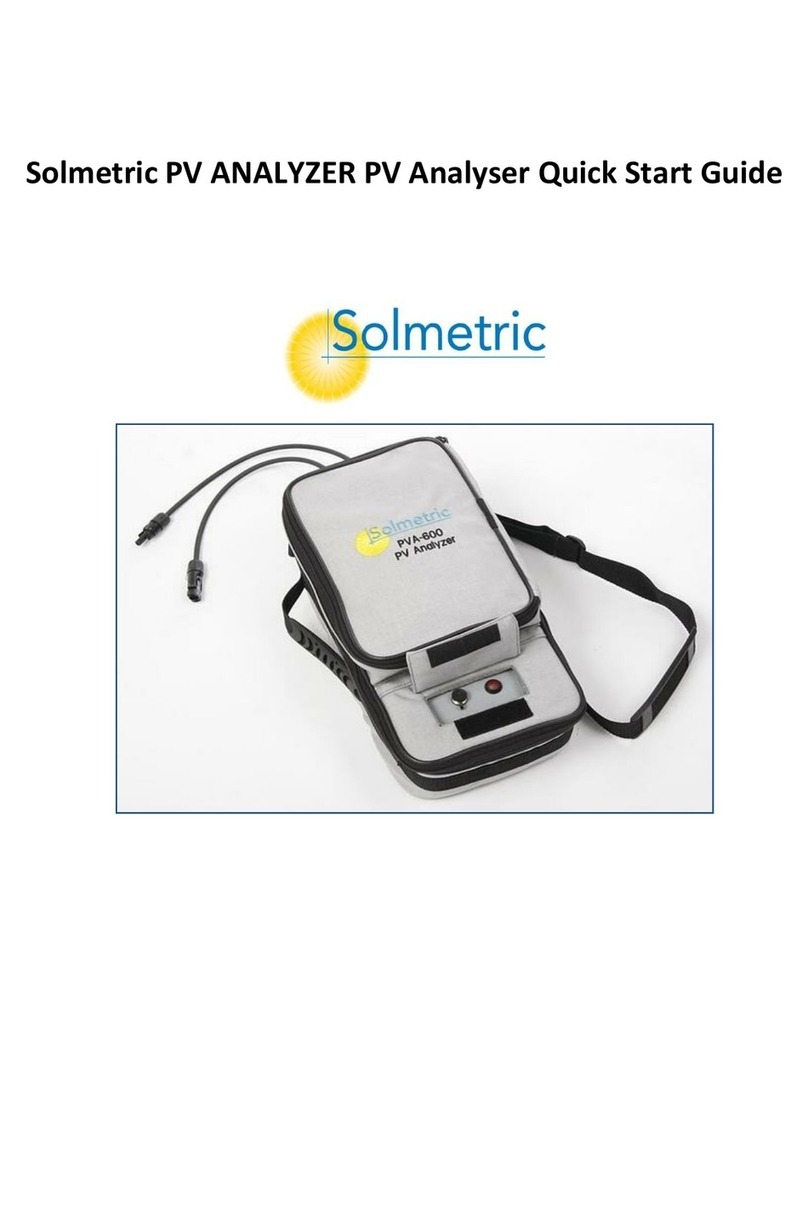
Solmetric
Solmetric PVA-600 User manual

Solmetric
Solmetric PVA-1500S User manual

Solmetric
Solmetric PVA-1000S User manual
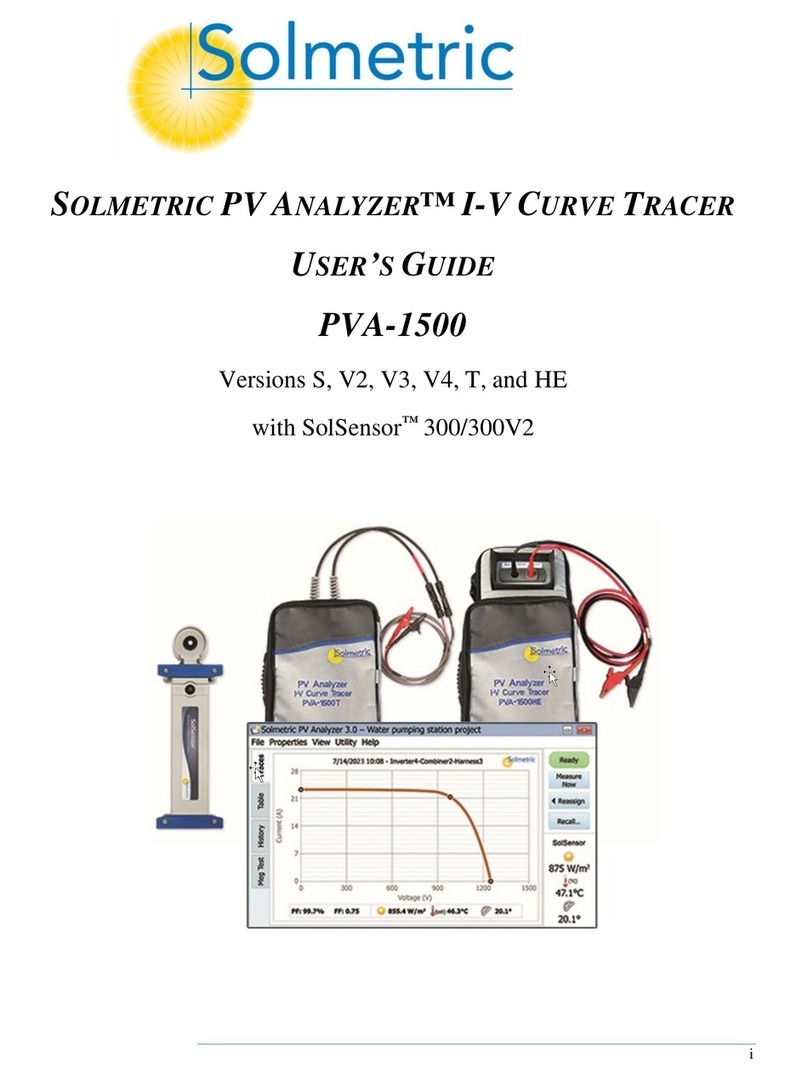
Solmetric
Solmetric PV ANALYZER PVA-1500 Series User manual
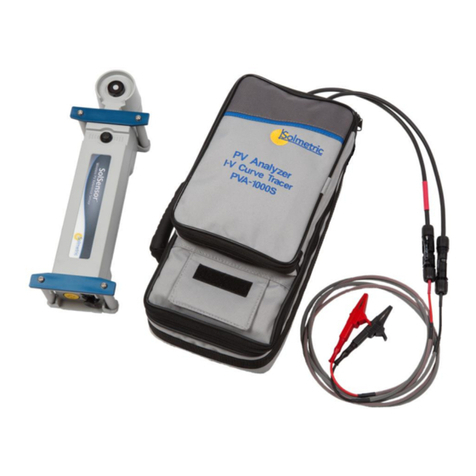
Solmetric
Solmetric PVA-1500V2 Reference guide

Solmetric
Solmetric PVA-600 User manual

Solmetric
Solmetric SunEye 210 User manual

Solmetric
Solmetric PVA-1500V2 User manual
Popular Measuring Instrument manuals by other brands
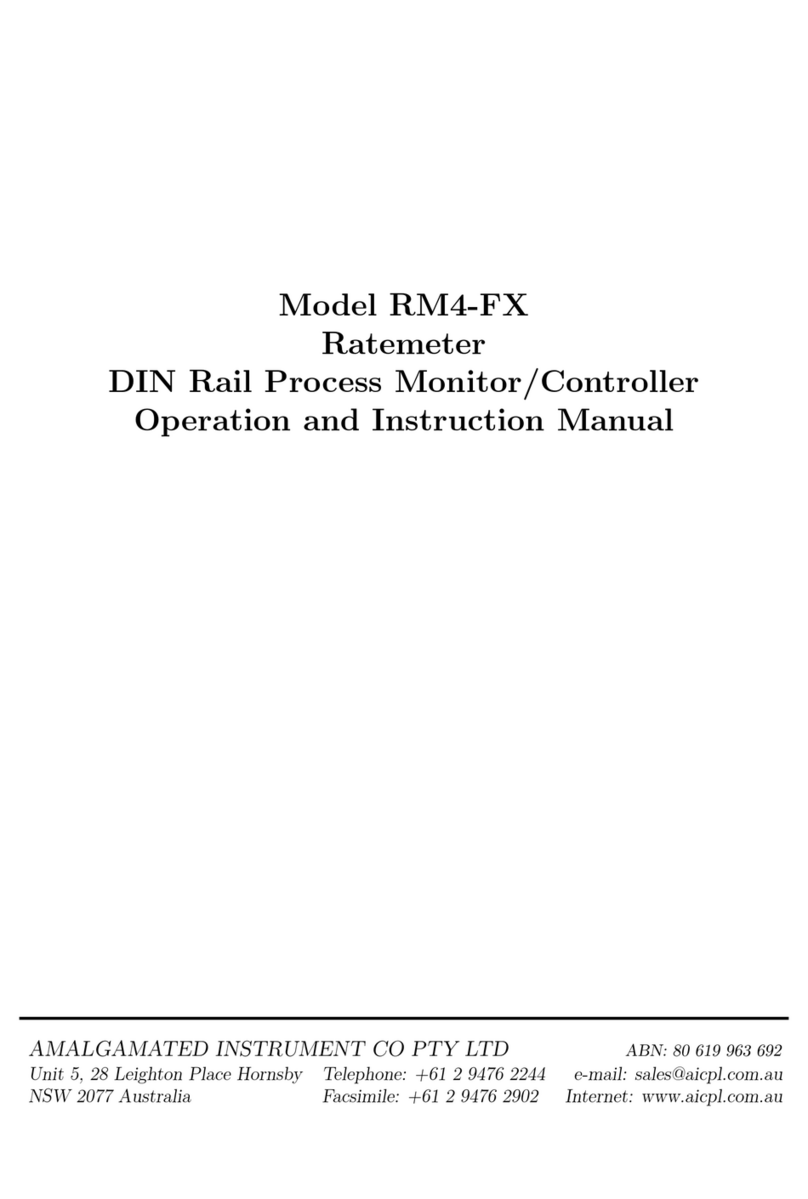
AMALGAMATED INSTRUMENT
AMALGAMATED INSTRUMENT RM4-FX Operation and instruction manual
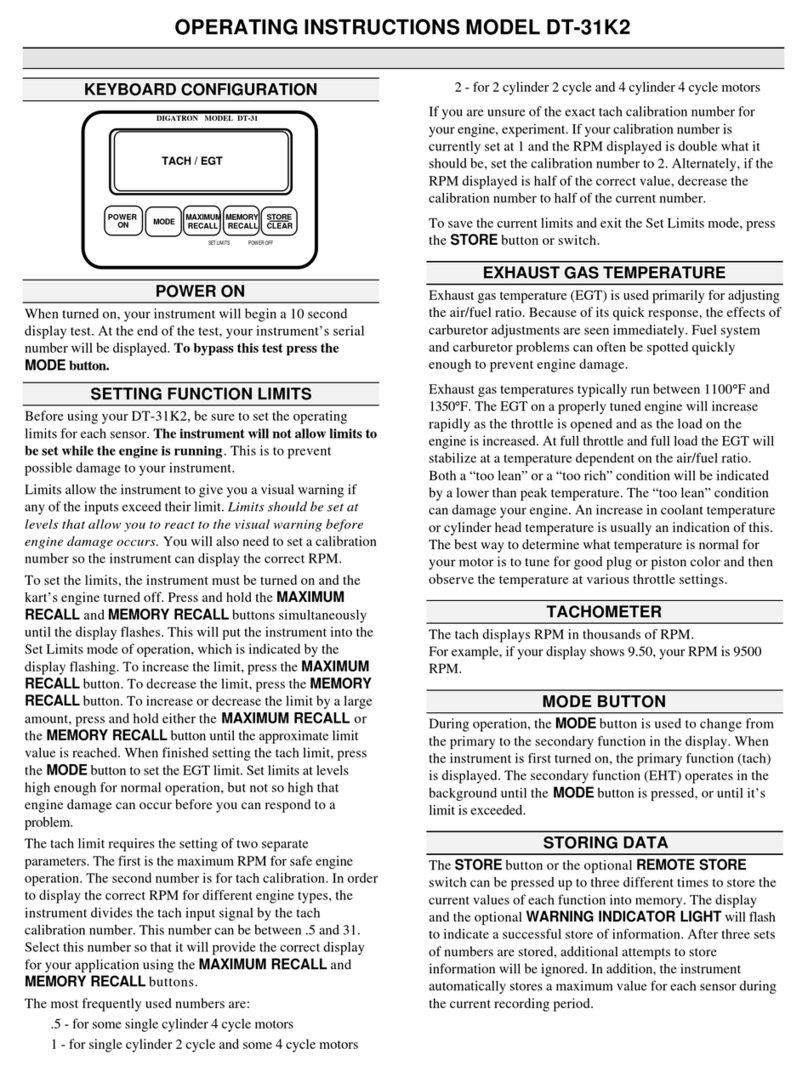
Digatron
Digatron DT-31K2 operating instructions
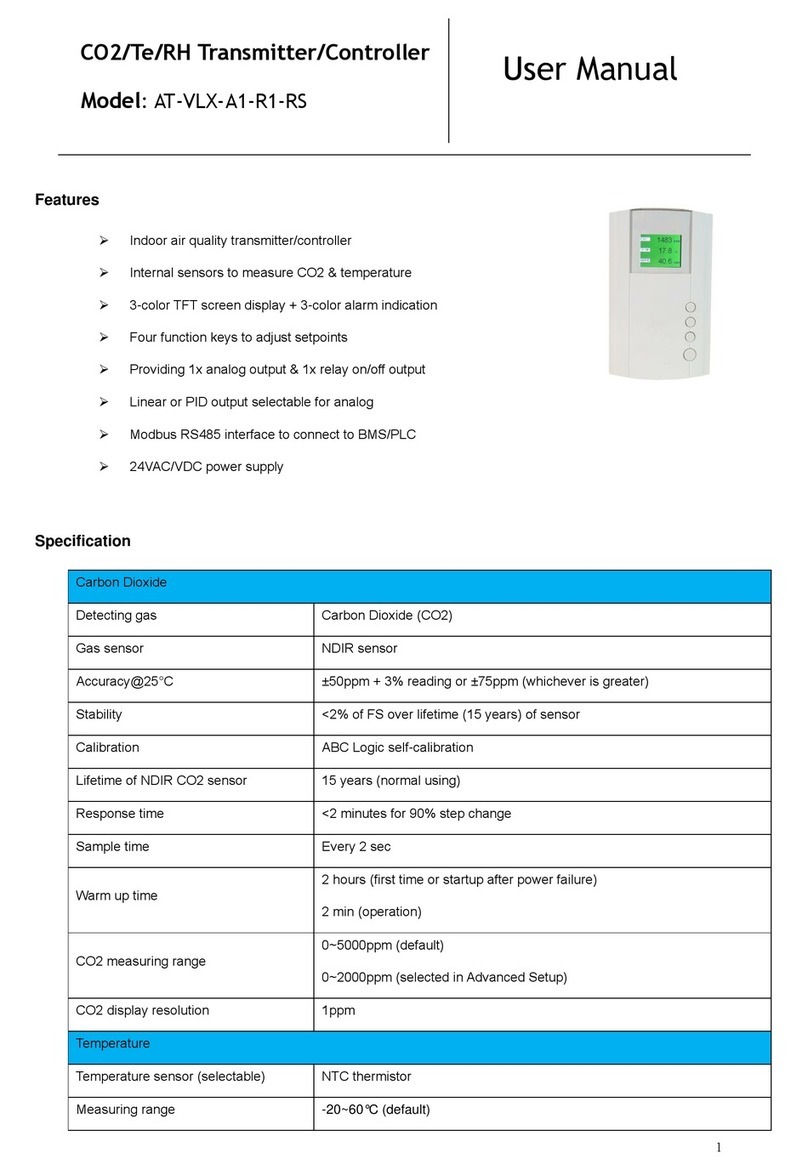
Atal
Atal AT-VLX-A1-R1-RS user manual

Ruskin
Ruskin TDFi-RT Technical bulletin
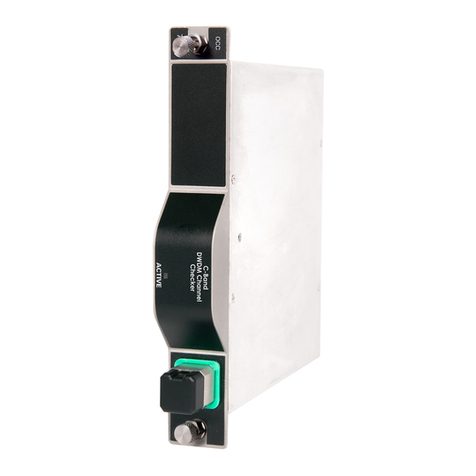
EXFO
EXFO FTB-740 DWOCC Series user guide
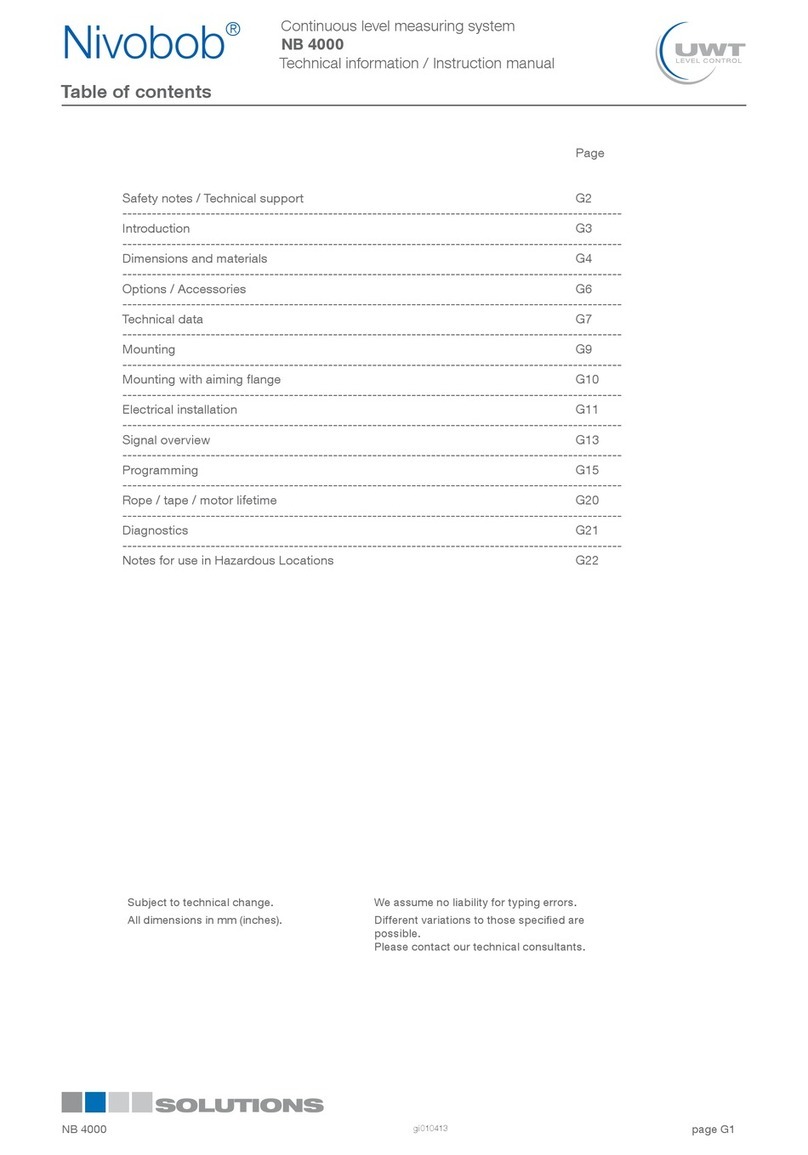
UWT
UWT Nivobob NB 4000 Technical Information/Instruction manual
